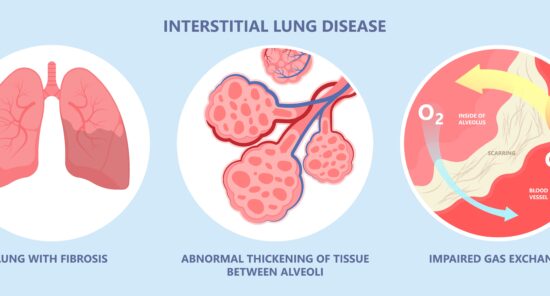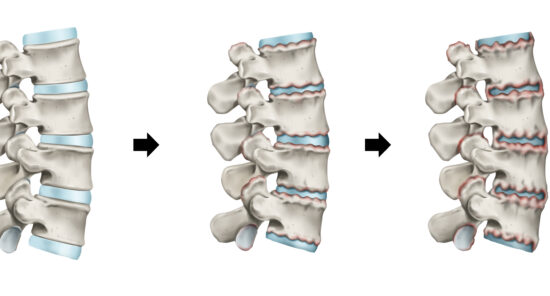Credit: Original article published here.In a recent study, published in Rheumatology International, researchers sought to determine predictive variables for development of interstitial lung disease (ILD) among patients with rheumatoid arthritis (RA), a common complication associated with increased morbidity and mortality. After retrospective analysis, the study’s lead author, Gouri Mani Koduri, and colleagues developed a novel risk-stratification model for ILD in patients with RA based on 4 clinical variables: age, smoking history, anti-cyclic citrullinated peptide antibodies, and rheumatoid factor. The investigators reviewed data on 430 patients with RA that was collected across 20 centers between 2010 and 2020. Of the participants, 210 had ILD confirmed by high-resolution computed tomography (HRCT). 4 Variables Effectively Predict Interstitial Lung Disease In independent variable analysis, researchers identified past or present smoking, older age, and rheumatoid factor/anti-cyclic citrullinated peptide positivity as key significant variables associated with risk of developing ILD among patients with RA. Using multivariate logistic regression models, the study’s authors constructed a 0-9 point scoring system with a threshold at 5 points for differentiating patients as high-risk or low-risk. The report noted the model had an area under the receiver operating characteristic curve of 0.76 (95% CI, 0.71-0.82), as well as a sensitivity and
Credit: Original article published here.Telomere length shortening plays a role in the deterioration and death of various immune cells, leading to immune destabilization and ageing. Researchers, led by Donglei Wei, investigated if leukocyte telomere length (LTL) had a causal relationship with rheumatoid arthritis or ankylosing spondylitis (AS). Based on their Mendelian randomization (MR) study, the authors suggested longer LTL may be associated with increased risk of developing AS, and may play a role in spondyloarthritis progression. The study did not find evidence of a similar relationship between LTL and rheumatoid arthritis in analyses. The data were presented in Frontiers in Immunology. Telomere Length Linked to Spondyloarthritis The analysis encompassed 472174 LTL records from the UK Biobank genome-wide association study database, as well as 229640 patients with AS and 212472 with RA from the FinnGen database. Researchers used MR-Egger, inverse variance weighting, and weighted median methods to evaluate the causal effects of LTL on RA and AS. During forward MR analysis, investigators stated their inverse variance-weighted (IVW) and weighted median results suggested that longer LTL could be associated with increased risk of developing AS (IVW odds ratio, 1.55; 95% CI, 1.14-2.11; P=.006). In addition, MR-Egger regression models indicated there was no pleiotropy
Credit: Original article published here.In the phase 4 AWARE study, researchers compared golimumab and infliximab in patients with rheumatoid arthritis. After around 40% of AWARE participants reported no concurrent use of methotrexate, researchers conducted a post hoc analysis to evaluate golimumab with or without methotrexate for rheumatoid arthritis. Data were presented in BMC Rheumatology. The analysis’s lead author, Aaron Broadwell, reported that the efficacy of golimumab either with or without methotrexate was generally similar over 1 year, regardless of prior biologic treatment history. The report noted that real-world adverse event outcomes with golimumab were consistent with the previously described safety profile. Golimumab Performs Similarly With or Without Methotrexate The real-world, prospective, noninterventional AWARE study included 685 patients treated with golimumab, of which 420 (61%) were on concomitant methotrexate and 265 (39%) were not; authors added that 63% and 72% of the groups, respectively, discontinued the study. The efficacy of golimumab was evaluated based on mean change in Clinical Disease Activity Index (CDAI) at months 6 and 12 and safety was evaluated based on adverse events over 1 year of follow-up. Authors found patients in the golimumab with methotrexate group had a shorter mean disease duration compared with patients in the golimumab




